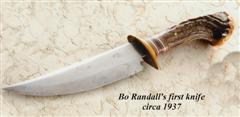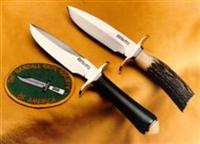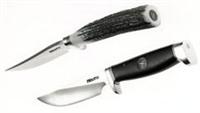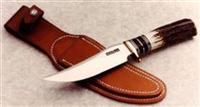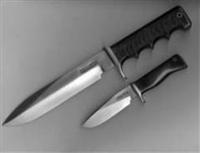I recently purchased a Model 12-9 Sportsman Bowie with an elephant ivory tip handle. It was described as having a walrus handle so I asked David Warther about the handle material and he made some very interesting comments. I learned facts about ivory I never knew. Here are his comments:
The type of grain as well as the colors in the ivory tell me for sure this is West African hard ivory ( WAHI ). Notice the tan on the top run of the ivory and the lace grain on the sides of the handle - clear features of WAHI. It is great stuff - when I find such tusks I set them aside for special uses on musical instruments as the material has better acoustical properties than does savannah ivory. The material is 7% heavier than savannah ivory and harder. It has a glassier look and feel to it and has a degree of translucency not found in any of the other ivories - it has a glow about it and in thinner forms, less massive form than this handle, the translucency is highly pronounced and most endearing to the soul. If you hold it very close to a very bright light ( do so briefly so no lasting heat can affect your ivory ) and compare it to other elephant handles under this condition you will see the glow and translucency I make mention of. Its features include it being less likely to crack from heat seizing.
This is an exceptional handle. If both sides show this vivid lace grain with a similar look then your handle was made from a very small tusk and the nerve runs the centerline of the handle. The WA tusks are smaller than savannah, by far, and recently it was determined to be a different specie - settling an argument that ran for millennia. I would say the tusk was only 1.5 to 2 feet long and most likely came from Liberia, West Africa. The glassy tactile nature of this type ivory caused it to be highly sought after by the Brits for their chess sets. What made it to America were from personal hunts in Liberia and sometimes Nigeria, occasionally western Congo, and often enough brought back by missionaries. The rubber plantations in WA, especially Liberia, brought the majority of the stock into the US. All of our rubber companies ( tires ) had extensive plantations there thru the 60's and 70's until the rubber plantations in SE Asia, Malaysia, etc. took the volume away. So for decades there was a flow of " rubber executive ivory " streaming in from WA with such tusks. Few, if any, were imported by the import houses here in the US as the commercial trade saw them headed to London for domestic use only - not for re-exportation - again - for the Brit's chess set companies.
The size, geometry and glassy feel of the WAHI could have caused a novice to believe he/she had a walrus tusk section and so there is a plausible explanation as to why the original owner, or subsequent owner(s) believed he/she had a walrus ivory Randall. Also, the glassy feel of the finished product is much like the glassy feel of walrus - modern walrus more so than fossil has this self-same feature. At this point I would bet good money this is WAHI. I live 50 miles from Akron, Ohio and have bought a lot of " rubber ivory " over the years from the estates of the rubber company executives that lived near this tire capital of the world. Incredible material.
The nerve is clearly seen coming out on the end so this is elephant (walrus does not have a black dot nerve) and, as mentioned, West African. It is from the tip of a small WAHI tusk.
Attachments
------
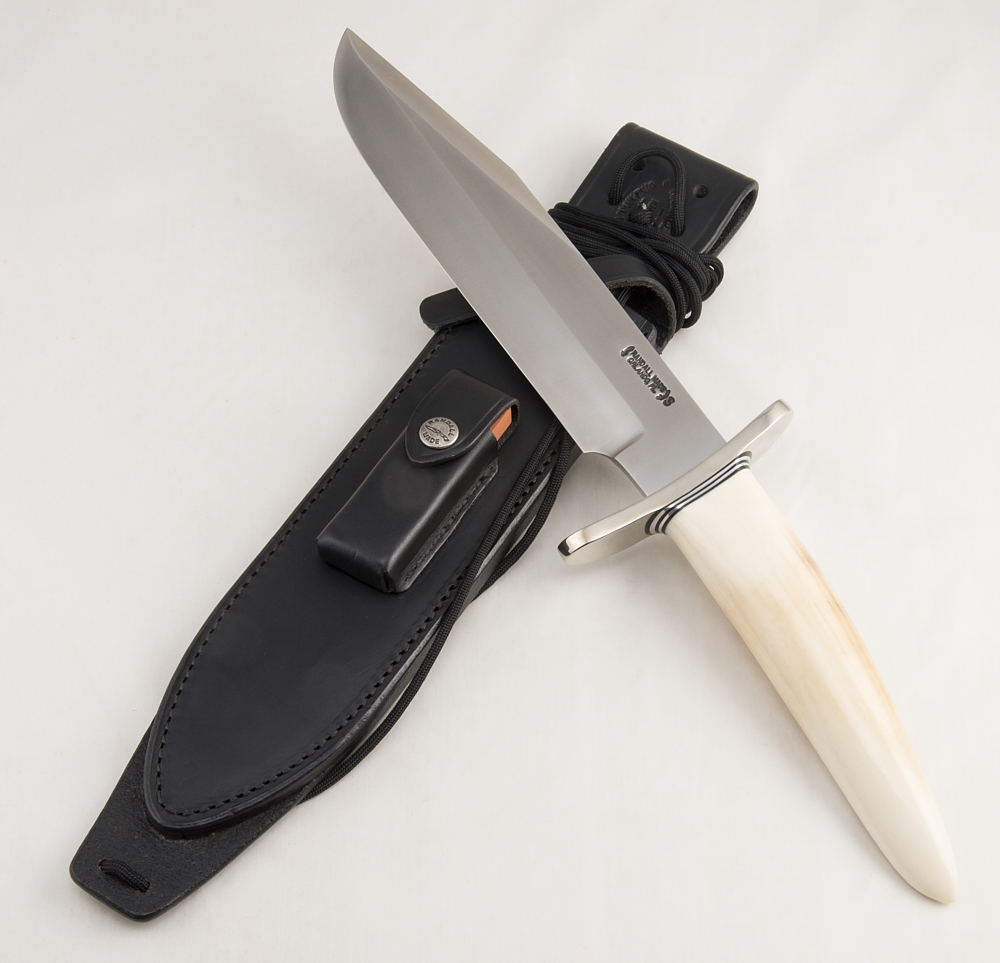
------
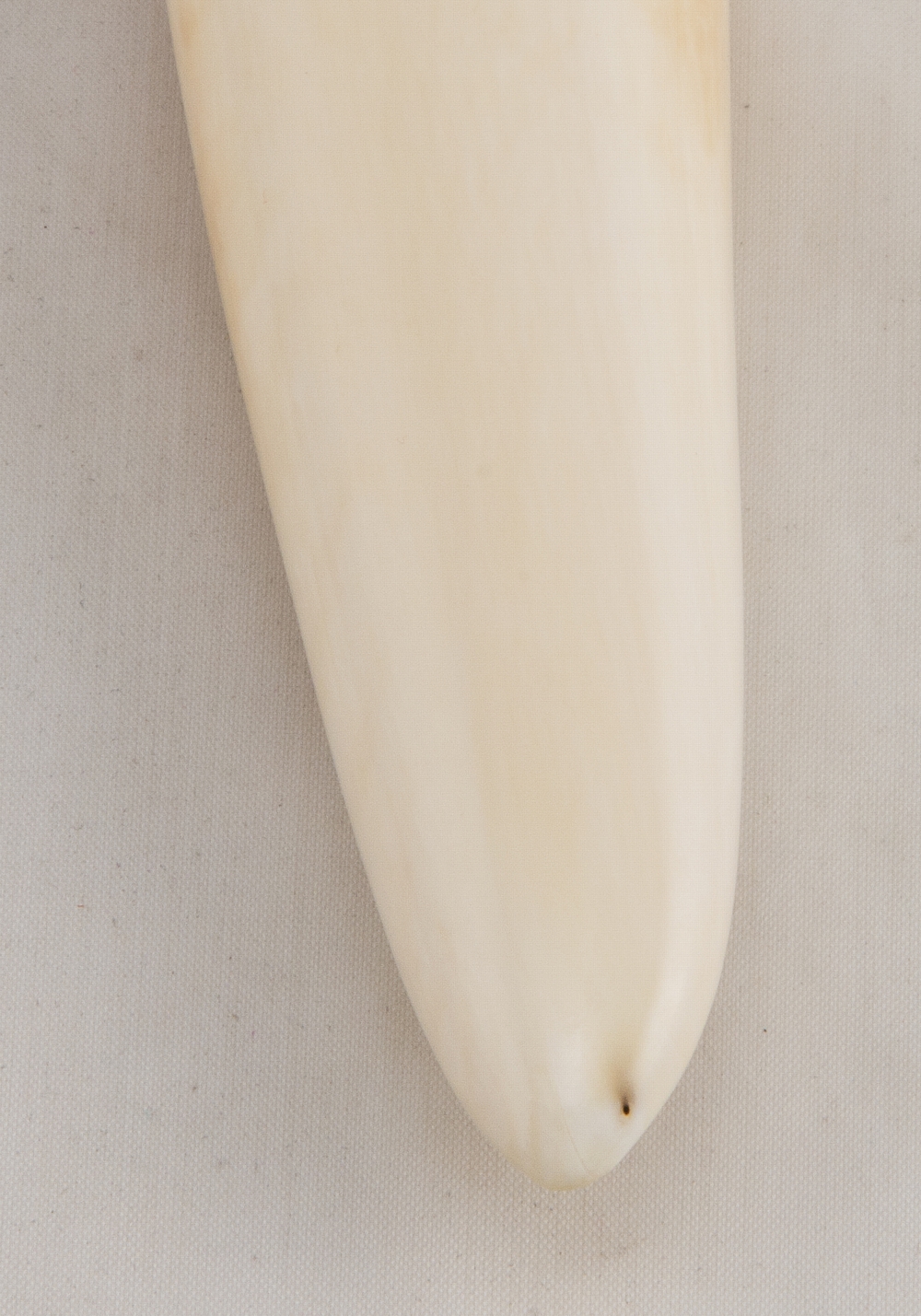
_________________________
Jim Gates
RKS #5815

